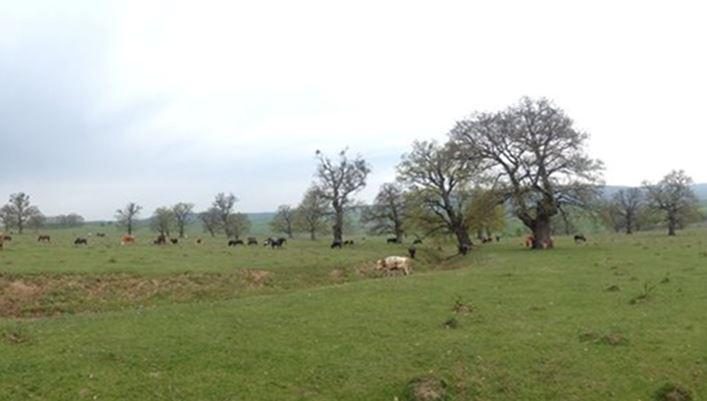
Wood pastures in Southern Transylvania, Romania
Description of system
Many of the wood pastures in Southern Transylvania in Romania were created by the grazing of closed oaks woodlands and they are considered to have high cultural and natural value due to the presence of the ancient oak trees. The ecological and economical sustainability of the system is thought to be favoured by cattle and buffalo grazing rather than sheep grazing and the maintenance of the old, large, often hollowing or dead trees. As wood-pastures from this region were always communally managed, their social sustainability will depend on finding solutions to promote their value for rural communities. However a key problem to long-term sustainability is the lack of tree regeneration, the intensive sheep grazing, the loss of large, old trees and the overall decrease of the social value of the wood-pastures.
Initial stakeholder meeting
Tibi Hartel has been working with Babes-Bolyai University and a Romanian-based charity called ADEPT to promote the social and ecological sustainability of wood pastures in the Southern Transylvania in Romania. He argues that because of the high social, cultural and economic significance of the wood pasture, any future management plan needs to understand the historic management and social role of these landscapes, and to recognize the multiple roles of these sites from a whole system perspective. Crucial elements of a conservation policy for wood-pastures include securing the value of the grazing systems and the tree components (old and young), as well as promoting the role of local communities.
Three potential research themes have been identified. The first is to determine economic and socially viable techniques to increase the regeneration of new trees on the wood pasture. This could be done by temporal reduction of the grazing activity in various parts of the wood pastures, or tree protection with thorny shrubs. A second potential area is a comparison of the biodiversity impacts of grazing with cattle with grazing by sheep. A third area is to investigate the openness of local communities to engage with the protection of ancient trees on wood pastures.
If you would like to know about the activity of this group, please contact Dr Tibi Hartel hartel.tibor@gmail.com
Download the initial stakeholder report
Download the initial research and development protocol
A research and development protocol was produced in July 2015
Download the system description
A synthesis of recent and on-going research related to wood-pastures in southern Transylvania was produced in September 2015.
Lesson learnt
Tibor Hartel and his colleagues describe the lessons learnt from their research on the wood pastures of Transylvania in Romania.
- A series of interviews indicated that Romanian farmers valued mature trees on pastures mostly for their shade, and large old trees mostly for their contribution to culture and heritage. However when these trees start to decay, instrumental (i.e. shade for livestock) and relational (i.e. cultural, heritage) were insufficient to prevent farmers clearing the trees. It is argued that ecologists, working with others, need to raise awareness about the biodiversity value of large, old, hollowing trees. The Remarkable Trees of Romania (RToR) initiative has its main goal to engage local communities in the inventory and valuing large old trees from wood-pastures.
- The second part of the study focused on the influence of sparse trees and shrubs on managed pastures on the diversity of spiders and plant communities. This scattered woody vegetation creates statistically distinct communities of plants and spiders. Furthermore, managed oak wood-pastures contained several rare species of spiders which are usually only found in natural ecosystems.
- In the third part of the study, field surveys of over 90 wood-pastures from the Transylvanian region of Romania showed that there is a great potential for natural tree regeneration using thorny shrubs. However the evidence suggests a very low survival rate of planted trees, and investment and effort is needed to protect the young trees.
- The last part of the report describes an initiative to bring together local community members, ecologists and farmers to address the contrasting values placed on old hollowing trees described in the first part of the study.